From Duchess to Viscount (Vis-what?): A Complete Guide to British Royal Titles
- Oops!Something went wrong.Please try again later.
- Oops!Something went wrong.Please try again later.
- Oops!Something went wrong.Please try again later.
- Oops!Something went wrong.Please try again later.
- Oops!Something went wrong.Please try again later.
- Oops!Something went wrong.Please try again later.
- Oops!Something went wrong.Please try again later.
While most of us commoners (like myself) are familiar with terms like queen, king, princess and prince, there are a handful of other titles used in the British royal family that are slightly less familiar (like Viscountess, for instance). Now that the royal family has a new monarch (or head of state), King Charles III, you might be looking for a refresher on the confusing variety of titles.
Fortunately for you, I've got you covered. But before I share those details, it's worth noting that the British Monarchy is a constitutional monarchy, meaning that the sovereign or head of state has no political or executive role. Rather, an elected Parliament is responsible for passing legislation.
Keep reading for a full primer on every title in the English peerage system, so you can avoid any royal faux pas should you ever run into His Majesty the King.
WHO WAS THE DUKE OF SUSSEX BEFORE PRINCE HARRY?
Royalty for King/Queen and Prince/Princess
1. King or Queen
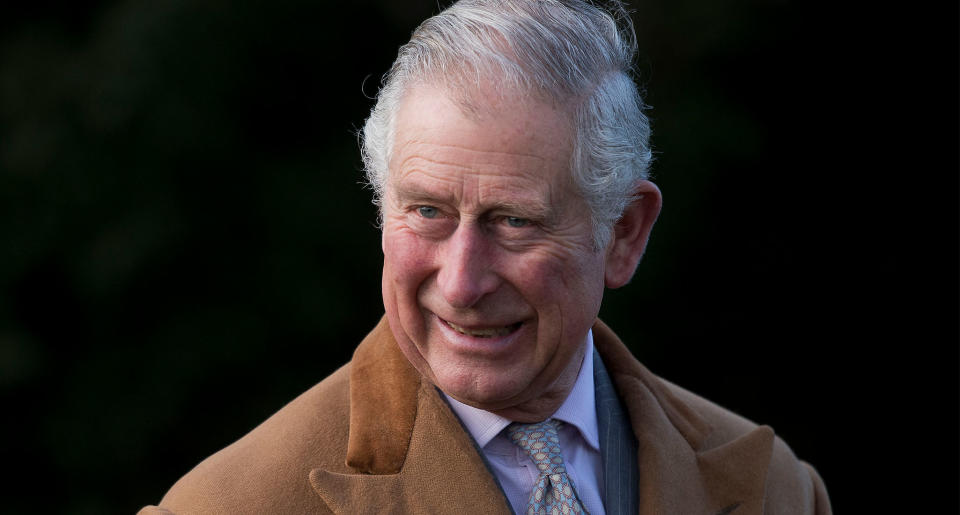
Justin Tallis/AFP/Getty Images
Example: King Charles III
Also known as His (or Her) Majesty, this person is the rightful leader of the British Commonwealth (aka the head honcho) and is the only one with the ability to grant any and all titles. The king or queen comes into this cushy yet challenging job when the standing monarch abdicates the throne, retires or passes away. It’s then that the late monarch’s right to rule is passed to his or her heir, their eldest child.
The current monarch, King Charles, was coronated on May 6, 2023. Although he is politically neutral, he keeps busy with royal engagements, like hosting world leaders and spearheading Remembrance Day ceremonies. During his first year on the throne, King Charles had 571 engagements across 79 regions and all four nations of the U.K., two state visits, over 1,000 honors awarded for service and achievement and 80 receptions.
2. Consort of The King/Queen Consort
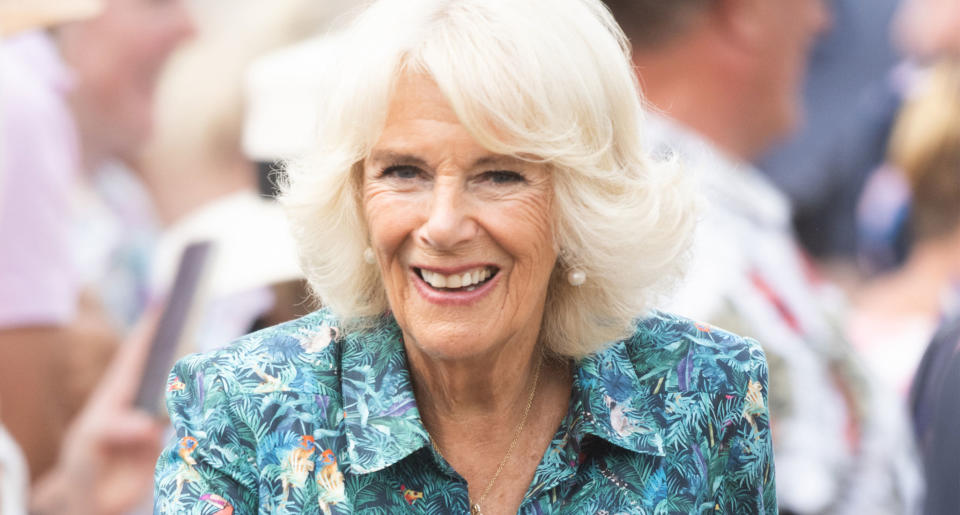
Samir Hussein/Getty Images
Example: Camilla Parker Bowles
A consort is the husband or wife of the reigning monarch. Now that King Charles (former Prince of Wales) has ascended the throne, Camilla Parker Bowles is officially the queen consort, a title that was bestowed upon her by Queen Elizabeth II before the monarch passed away.
Camilla was crowned alongside her husband in a formal ceremony during his coronation. However, per The New York Times, the queen consort does not hold any formal position in government. She is currently the patron or president of over 100 charities, and since her husband ascended the British throne, His Majesty the King conferred many honors to the queen, including Lady of the Thistle and Grand Master and First and Principal Dame Grand Cross of the Most Excellent Order of the British Empire.
3. Prince or Princess
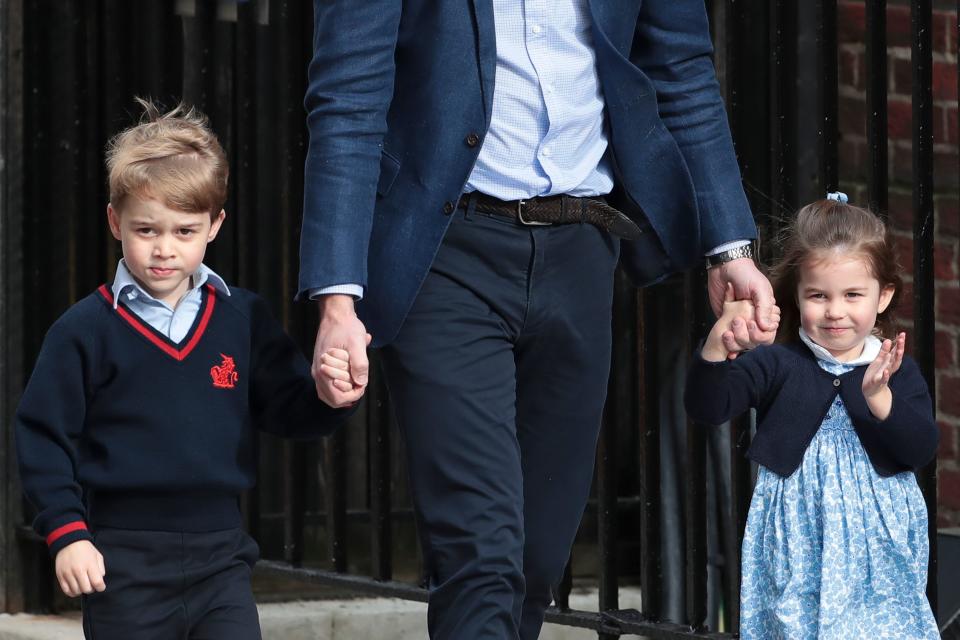
DANIEL LEAL-OLIVAS/AFP/Getty Images
Examples: Prince George and Princess Charlotte
A monarch’s kids are dubbed princes and princesses at birth (think Prince Edward), but they aren’t the only ones who enjoy the title. Children born to a prince (like Prince William and Prince Harry) also get the moniker, while those born to a princess do not (like Zara Tindall). Also, thanks to a 1917 rule created by King George V that states “royal titles to be given to children of the sovereign’s sons,” Prince Harry and Meghan Markle's two children—Archie and Lilibet—are now eligible for prince and princess titles since King Charles has taken the throne.
Meanwhile, Kate Middleton, who is married to Prince William, was bestowed the title of "Princess of Wales" by her father-in-law in 2022, though she is not in the British line of succession. The king announced, “Today, I am proud to create him Prince of Wales. With Catherine beside him, our new Prince and Princess of Wales will, I know, continue to inspire and lead our national conversations.”
4. Princess Royal
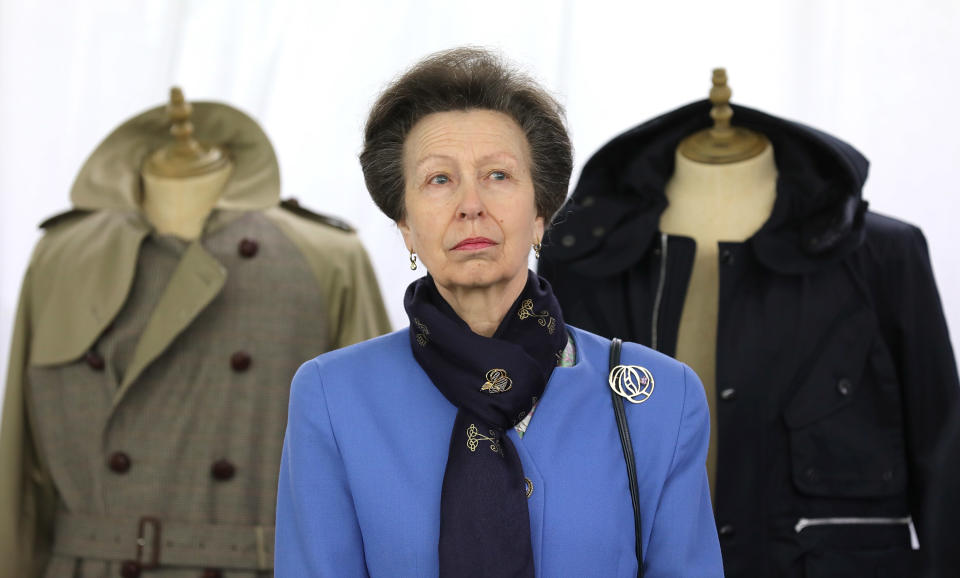
Tim Whitby/Getty Images
Example: Princess Anne
This title is reserved for the eldest daughter of the monarch, and it’s up to the king or queen when the title is granted. Traditionally, a princess is given the prestigious title after marriage because an old tradition says that anyone who gets intimate with the princess royal before saying “I do” shall be sentenced to death. Interestingly enough, there are no further perks associated with being dubbed the princess royal. Even stranger is the fact that there’s no such thing as a prince royal. Even though King Charles is now monarch, Princess Anne will keep the title she received under her mother's rule.
Princess Anne carries out several official duties on behalf of the monarch, and she is currently patron or president of over 300 organizations. She has also been named the hardest-working royal on multiple occasions, participating in more than 11,000 engagements, which is more than any other living royal, according to The Guardian.
Nobility (Peerage)
5. Duke or Duchess
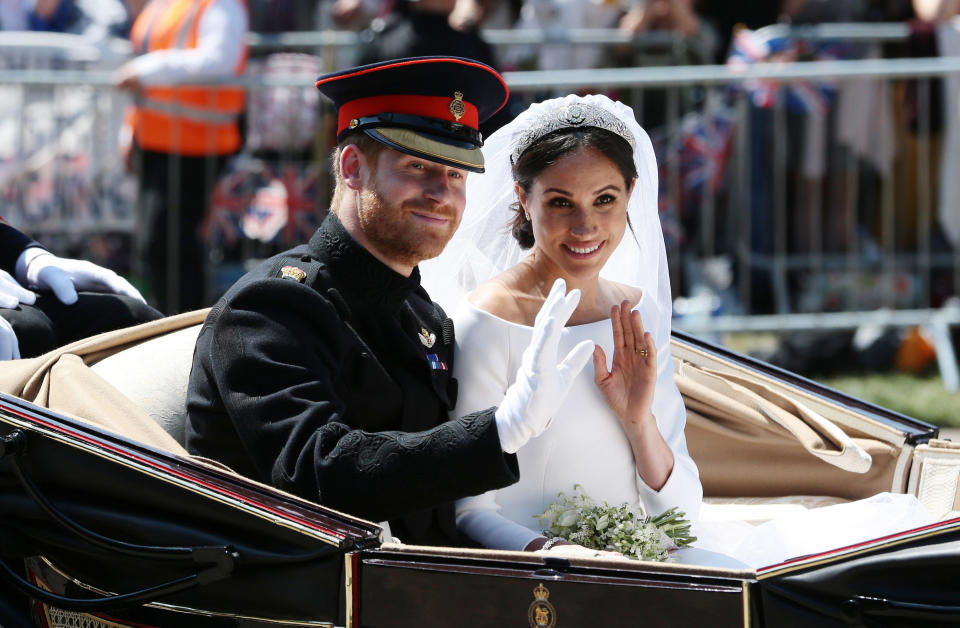
Aaron Chown/WPA Pool/Getty Images
Examples: The Duke and Duchess of Sussex
The highest degree of the British peerage system, a duke or duchess title is traditionally granted to a prince and his spouse upon marriage. Take the Duke and Duchess of Sussex, aka Prince Harry and Markle, for instance. Wondering what the significance of the title’s location is? Well, back in feudal times, being the Duke of Sussex meant that Harry would be granted all of the land in Sussex. However, now the title is more honorary than anything and a dukedom does not come with land or power. There didn't appear to be any rhyme or reason to the dukedom the late Queen Elizabeth chose for the men in her family other than availability. And although Prince Harry and Meghan Markle stepped down from their senior positions as royals, they have kept these titles.
After Markle and Harry resigned as working members of the royal family in January 2020, they launched The Archewell Foundation to serve communities in need and landed a few lucrative deals, including a multi-million dollar contract with Netflix.
6. Marquess or Marchioness
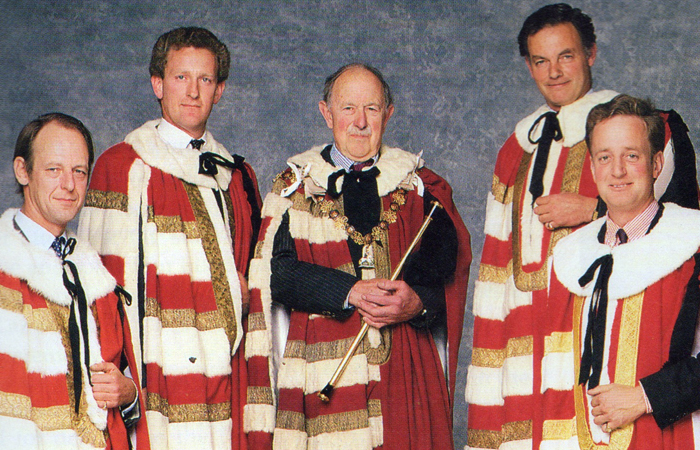
Courtesy of Peers Magazine
Example: Simon Rufus Isaacs, 4th Marquess of Reading
This basically extinct hereditary title was originally created for the leaders of English border territories in order to clarify that they ruled outside of interior provinces (like England). This group ranks below a duke but above an earl, count and a baron. The rank was acknowledged in European countries like Scotland, Germany, Italy and Spain and was adopted in imperial China and Japan.
Currently, Rufus Isaacs (second from the right) is one of the few with this distinction. A new marquess hasn’t been named since the Marquess of Willingdon in 1936 and anyone else with a marquess or marchioness title inherited it from their father. Like other titles in the peerage system, it doesn’t come with specific privileges.
7. Earl or Countess
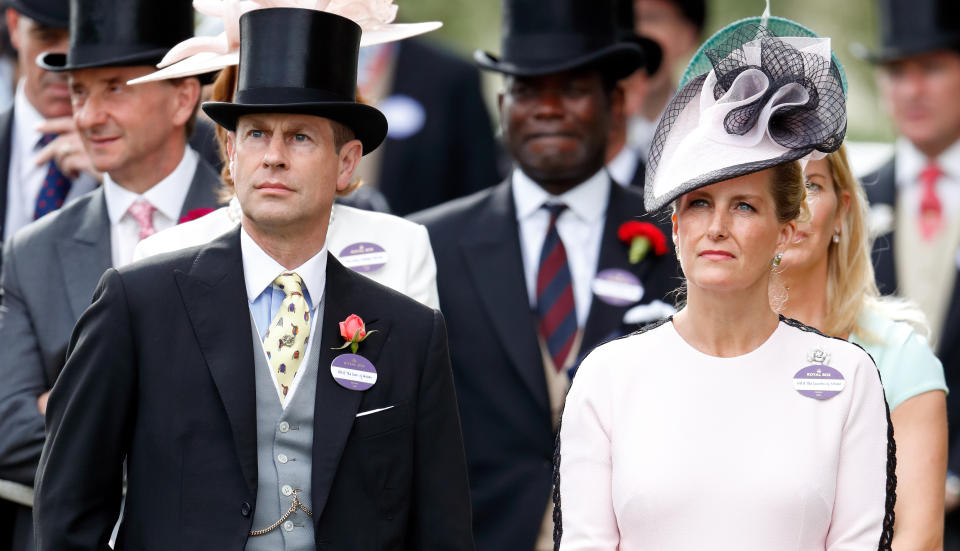
Max Mumby/Indigo/Getty Images
Examples: Prince Edward, Earl of Wessex
Slightly less swanky than a dukeship, earl titles are passed down from father to son and countess titles are acquired through marriage. Prince Edward, Earl of Wessex, is the only prince with an earl title. He also took on his father, Prince Philip, Duke of Edinburgh’s station after his passing. Fun fact: Earl is the oldest title in the whole damn peerage system, but it doesn’t come with royal perks other than the name. Also, per Merriam-Webster, the ancient title comes from the words "warrior" and "nobleman."
As for Sophie, Duchess of Wessex, you're probably wondering why she was previously titled "countess" and not "earless." This is because in other European countries outside of Britain, a count is the equivalent to an earl title.
8. Viscount or Viscountess
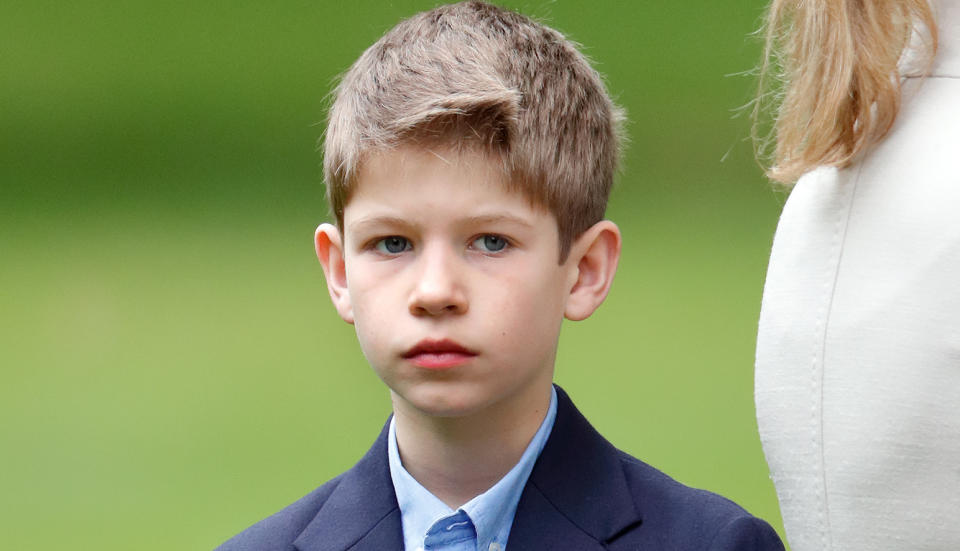
Max Mumby/Indigo/Getty Images
Example: James, Viscount Severn
Viscounts are often the children of an earl, like Prince Edward’s son, James, but it’s also a title that can be given. This title ranks above a baron and below an earl.
FYI, "viscount" is derived from the Old French term, "visconte", which itself comes from the Latin root "vicecomitem," meaning "deputy" or "companion." In the early Middle Ages (during the Carolingian Empire), monarchs would appoint viscounts to help the counts run the provinces.
9. Baron or Baroness
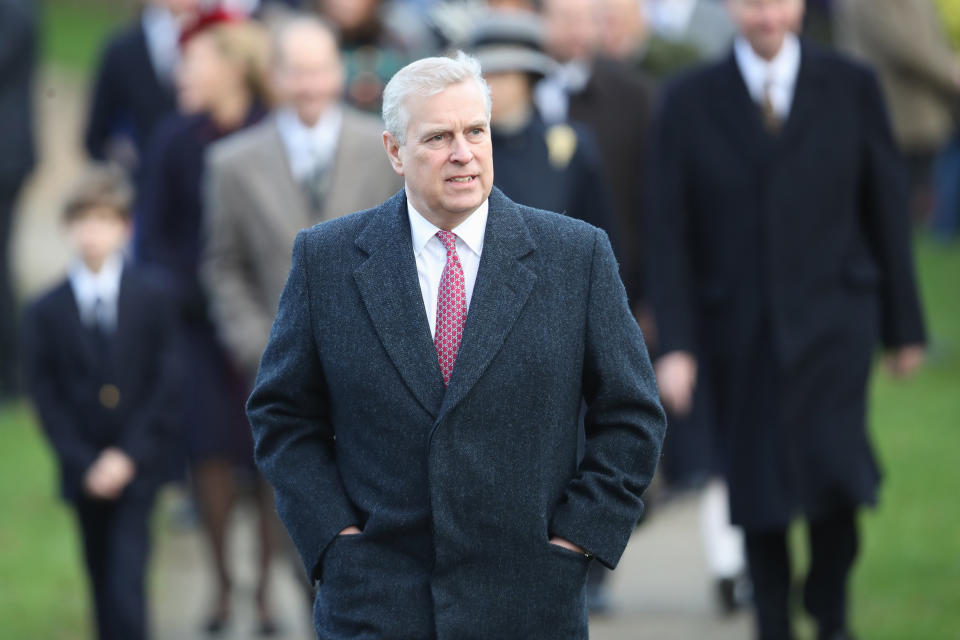
Chris Jackson/Getty Images
Example: Prince Andrew, Duke of York and Baron Killyleagh
A baron or baroness title can be passed down or bestowed, meaning you technically don’t have to be born into nobility or inherit the title. The rank was initially created to denote a tenant-in-chief to the monarch (someone who owned land and used it for feudal land tenure) and was allowed to attend Parliament, but now it doesn’t come with those bells and whistles. There are more barons than any other title in the peerage system.
Fun fact: King Charles was formerly the Baron Renfrew (an area in Scotland), and Prince William currently holds a baron title—the Baron Carrickfergus, referring to Carrickfergus in County Antrim, Northern Ireland.
10. Life Peer

Oli Scarff - Pool/Getty Images
Example: Governor of the Bank of England, Mervyn King
This is an honor given to someone via the monarch who has shown excellence in some way, like British economist and professor Mervyn King. This title cannot be passed down to children.
After the Life Peerages Act 1958 was established, dozens of people received this honor. Per the official U.K. Parliament website, "Although life Peers are appointed by the Crown, it is the Prime Minister who nominates them. By convention, the Leader of the Opposition and other party leaders can propose a certain number."
11. Lord or Lady
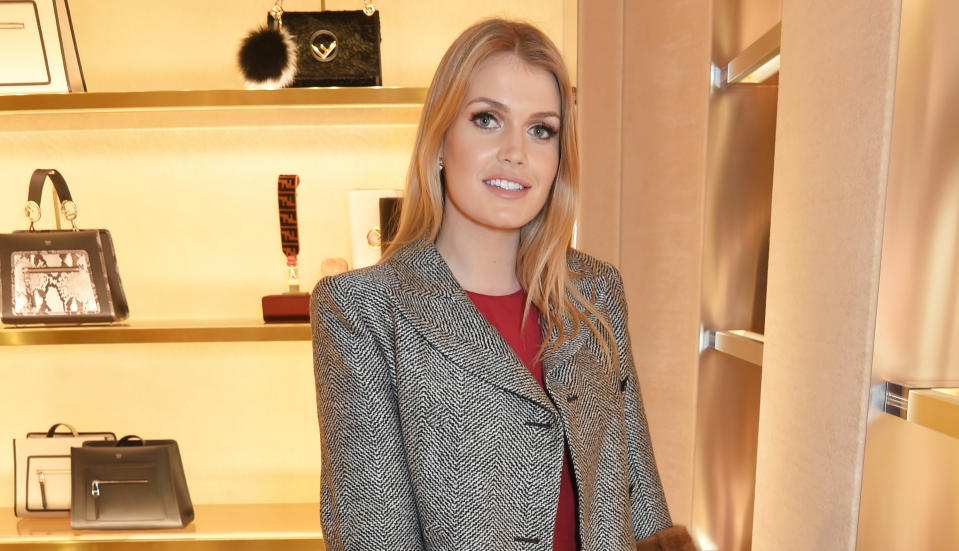
Dave Benett/Getty Images
Example: Lady Kitty Spencer
Marquesses, earls, viscounts and their female counterparts can all be referred to as lord or lady instead of their big fancy titles. Their children also acquire a lord or lady title. The preternaturally gorgeous Lady Kitty Spencer, whose parents are Charles Spencer, 9th Earl of Spencer and Victoria Aitken, is a prime example.
12. Knight or Dame

Dominique Charriau/Getty Images
Example: Dame Helen Mirren
Being made a knight or a dame is considered one of the highest honors in the U.K., and it's typically granted to those who have made a significant impact in their field. Per the official royal website, "knighthoods used to be awarded solely for military merit," but now, they "also recognize significant contributions to national life. Recipients range from actors to scientists, and from school head teachers to industrialists." During the reign of Elizabeth II, Helen Mirren, Maggie Smith, Sean Connery, Mick Jagger and Elton John are just a few stars who received a knighthood or damehood.
Stay up-to-date on every breaking royal family story by subscribing here.
King Charles Reveals ‘Great Joy’ and ‘Great Sadness’ in Emotional Personal Message

